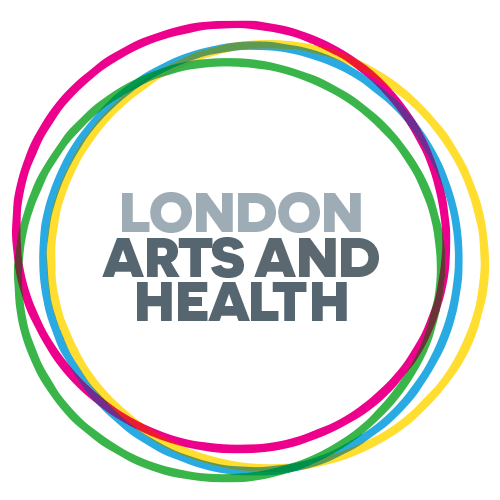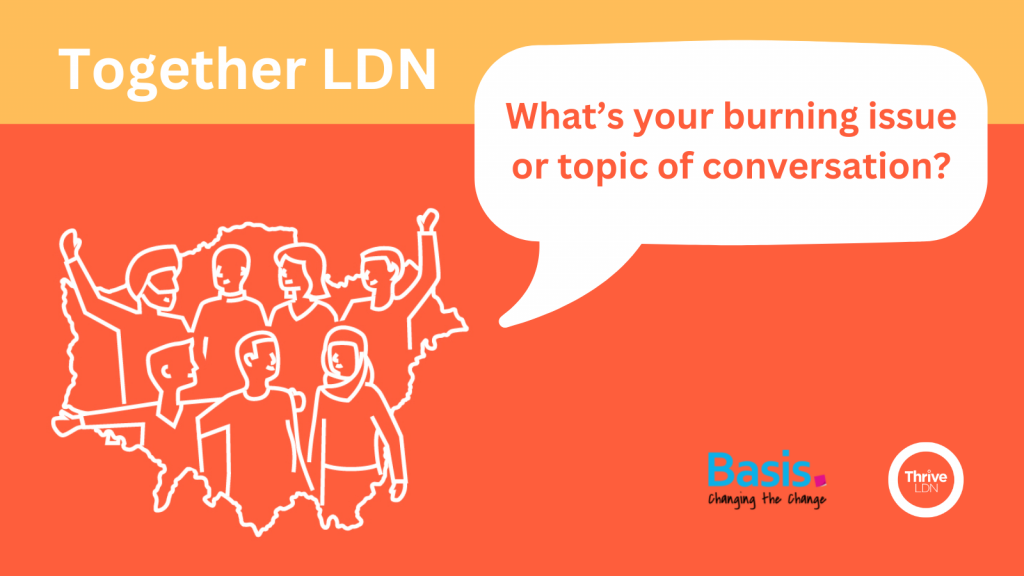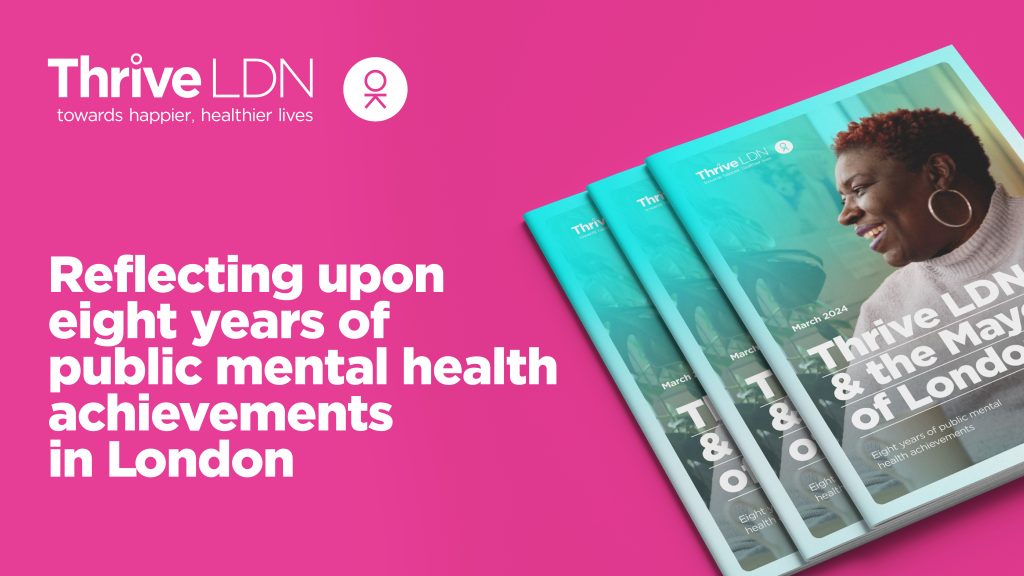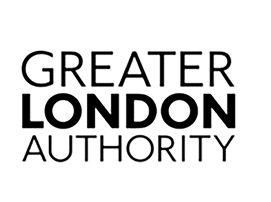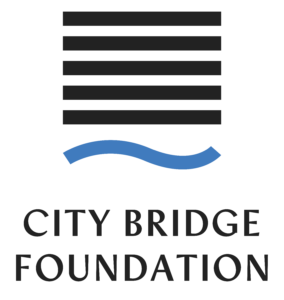The value of case study evidence Project case studies are often overlooked in academic research…

How and why does creativity support wellbeing? New learnings
There is a wealth of evidence linking arts and culture to wellbeing, but less is known about ‘how’ and ‘why’ creative activities support wellbeing.
Understanding this relationship allows policy makers and creative practitioners to identify which creative pathways work for different people in different settings. It helps to pinpoint the key ingredients of effective interventions, and avoid the pitfalls that can stop wellbeing from improving.
Our Senior Civil Society Lead, Ingrid Abreu Scherer, takes us through findings, recommendations and main outputs from our recent creativity and wellbeing project and introduces a new pathways model.
To understand the contexts and mechanisms that link creativity with personal wellbeing outcomes, we carried out a scoping review of existing evidence and developed a pathways model of our findings.
The review
We wanted to go beyond the wealth of evidence linking arts and cultural activities to wellbeing. To be included in our review, it wasn’t enough that studies looked at art or cultural activities, they had to explore the role that creative contexts and mechanisms played in achieving wellbeing outcomes.
We looked at research published since 2003, including grey literature submissions. The included studies:
- Looked at creative activities in places including the UK, Spain, Turkey, Hong Kong, USA among other countries.
- Were mostly about women, majority white, of a range of ages.
- Often targeted specific populations such as people with mental illness or chronic health conditions, healthcare staff, and prisoners and probationers.
- Were conducted in a range of settings such as community venues, universities or colleges, hospitals and medical schools or online.
- Explored at a range of creative activities, from one-off sessions, to a series of workshops, or where people took part in groups or on their own. These covered creative writing, theatre, making art, music and singing, video making, art interpretation among other types.
Key findings
We found initial level evidence that a range of creative activities positively affect a range of wellbeing outcomes. These include subjective wellbeing, positive mood, social connection, as well as reduced anxiety, depression or stress.
We also found promising evidence that these activities worked across a number of contexts including small scale community settings, large national-scale programmes, and activities targeted at specific groups as well as the general population. However, there were fewer men and fewer people from minority ethnic groups represented in the studies.
Crucially, the mechanisms that led to wellbeing outcomes were both relational and personal.
Personal mechanisms include:
- Active engagement and participation in creativity, including through creative interpretation.
- Autonomy and choice around creative practices and journeys.
- Feeling empowered and challenged to create and reflect. Valuing personal creative journeys.
- Stress-relief, distraction and escape from daily life and negative emotions.
Relational mechanisms include:
- Environments that foster trust, respect and support for creative endeavours.
- Positive interactions and connection, with other creators, friends, family and the wider community.
- Including people in decision making and co-production.
- Teaching and learning creative skills, and supporting different creative journeys.
The evidence showed that not everyone has access to creative activities and enabling contexts due to geographic variation in provision, and lack of formal policies.
We also found the following negative effects for some participants:
- Feeling overwhelmed and frustrated by the creative process
- Negative feelings associated by a lack of skill or competence
- Feeling vulnerable to criticism
- Not feeling fully involved in the co-creation of activities or processes.
These negative effects can be mitigated by ensuring that positive mechanisms are built into the design of activities.
For further key findings see our briefing, and for full findings read our report.
The role of creative practice experts
The evidence highlighted the importance of skilled facilitators in achieving wellbeing outcomes. These weren’t necessarily artists. Some projects paired creative professionals – such as curators, artists or musicians – with other roles – such as community development workers, social workers, or gardeners depending on the setting and the population.
Effective facilitators were associated with increased happiness, optimism, self-esteem and improved mindset. As well as better communication, connectedness and belonging, among other outcomes.
These creative practice experts understood and valued participants, supported self-expression, curiosity and autonomy, and helped foster positive relationships.
However, the studies didn’t explore what training, skills or experience were necessary for effective facilitators.
Pathways model
Based on existing evidence, the model sets out the creative contexts and mechanisms associated with wellbeing outcomes, so that we know what needs to be included in developing activities that work.
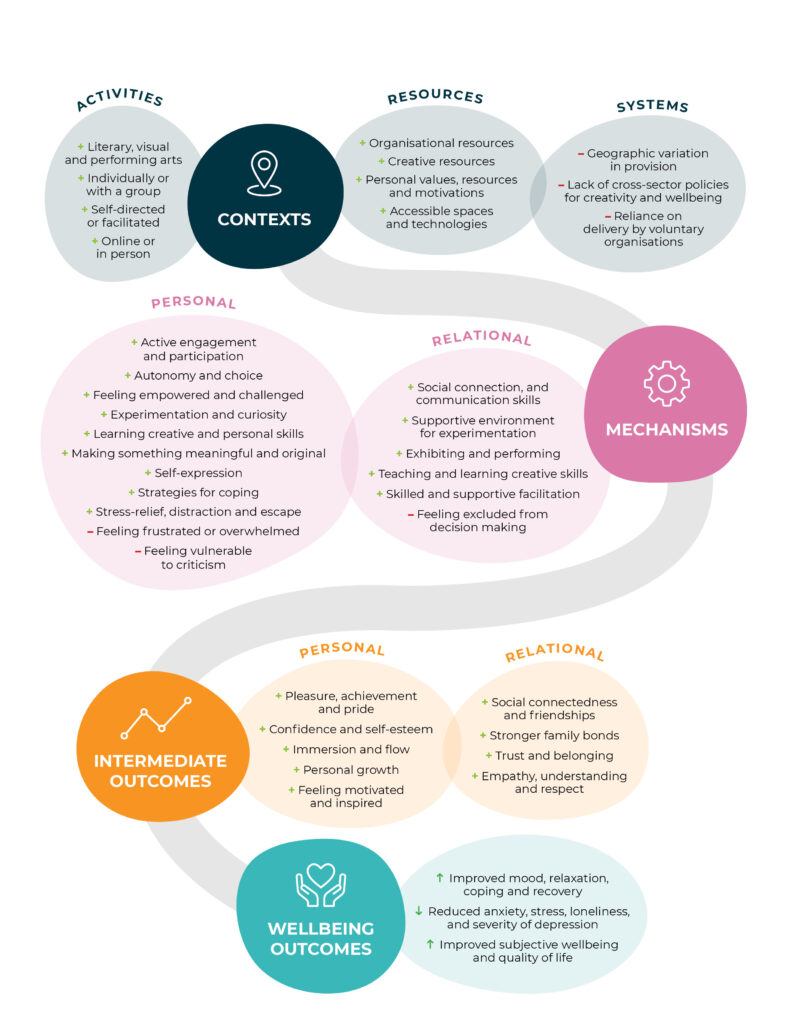
Not all the elements will be relevant to all activities or people. Creative interventions are complex and likely to involve more than one pathway to wellbeing. The right mix of ingredients needs to be determined by the people taking part in the activity, their circumstances and motivations.
The model can be used when designing new creative activities, revising existing ones, testing ideas, and during evaluation. For more information about the model and a guide for using it, see our briefing.
